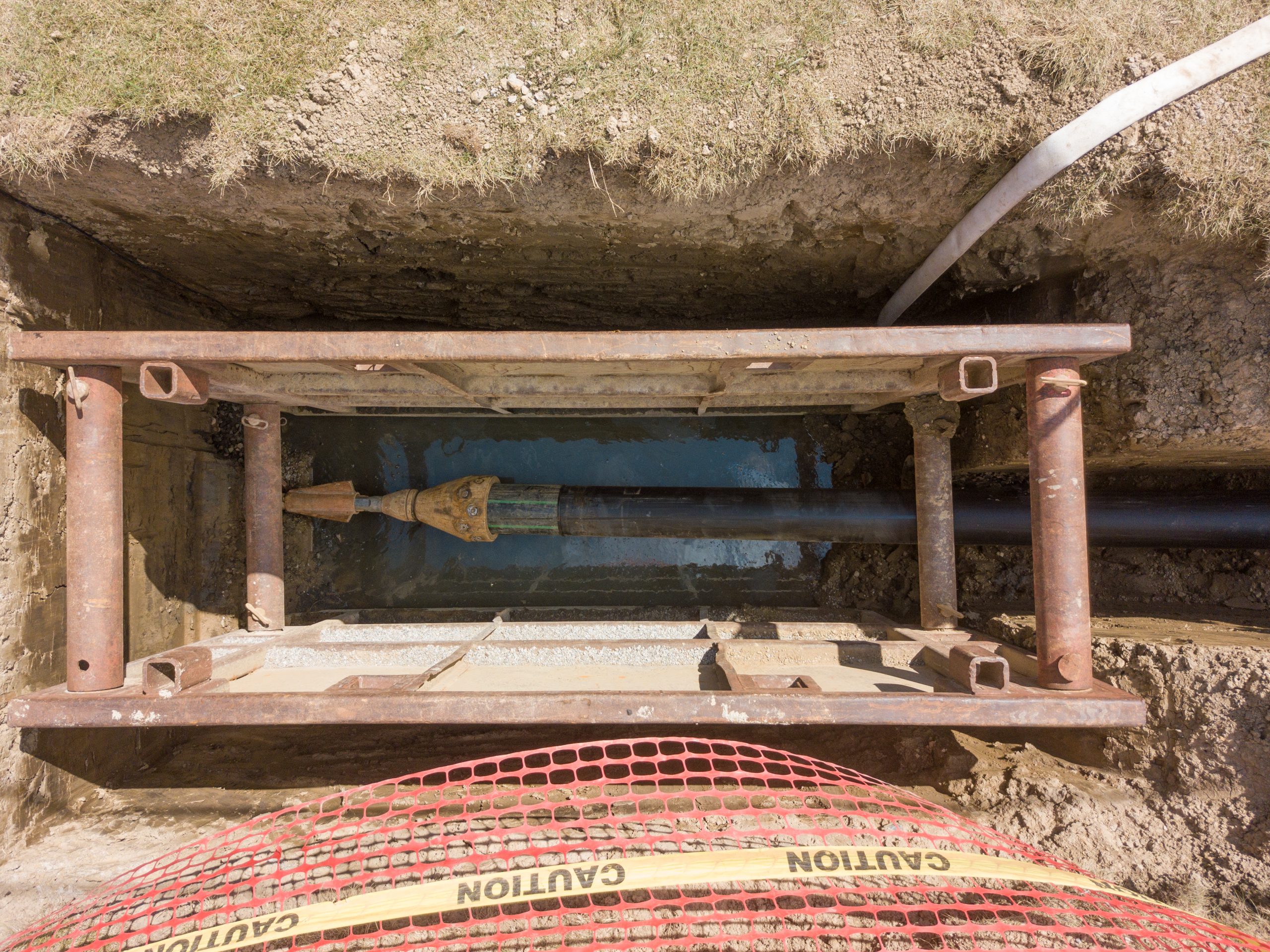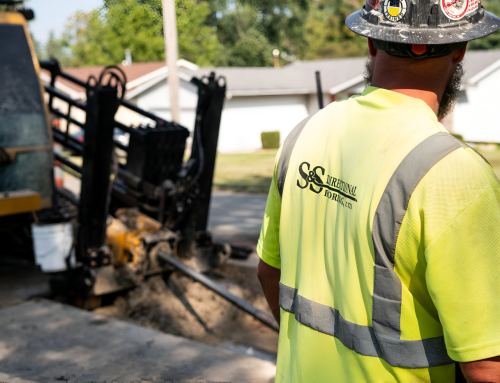Pipe bursting is a technique used for the installation of new pipes within existing ones, offering a solution for both maintaining the same diameter or upsizing to a larger diameter. This method involves specialized machines that burst or cut the old pipe while simultaneously pulling the new replacement pipe behind the bursting head. This dual action not only streamlines the process but also minimizes the need for extensive excavation, making it a practical choice for various projects. When talking to Kevin Hicks, a project coordinator at S&S, he says “it really is just that simple.”
There are two primary types of pipe bursting: static and pneumatic. Static bursting typically requires a larger pit for the machine to operate effectively. In this method, machine rods are pushed through the host pipe and connected to the new pipe being installed. This approach is generally employed for larger upsizing projects, where significant increases in diameter are necessary. The process is efficient, ensuring that the new pipe can be seamlessly integrated into the existing infrastructure with minimal disruption.
On the other hand, pneumatic bursting is ideal for tighter spaces with limited setup room. This technique utilizes compressed air to facilitate the bursting process, employing an air hose that runs through the existing pipe. A larger diameter piercing tool, connected to the bursting head, is then attached to a cable that has already been installed. This method allows for effective pipe replacement in confined areas, making it a versatile option for urban settings or locations with space constraints. When Jeremy Herman was discussing pipe bursting, he talks about the benefits of replacing old pipes. If there are leaks, more water comes in, which means wastewater treatment plants are running more and costing more to run. By replacing the pipes, less water comes in, meaning money savings for the entire community. Overall, pipe bursting offers a flexible, efficient, and less invasive alternative to traditional pipe replacement methods.


